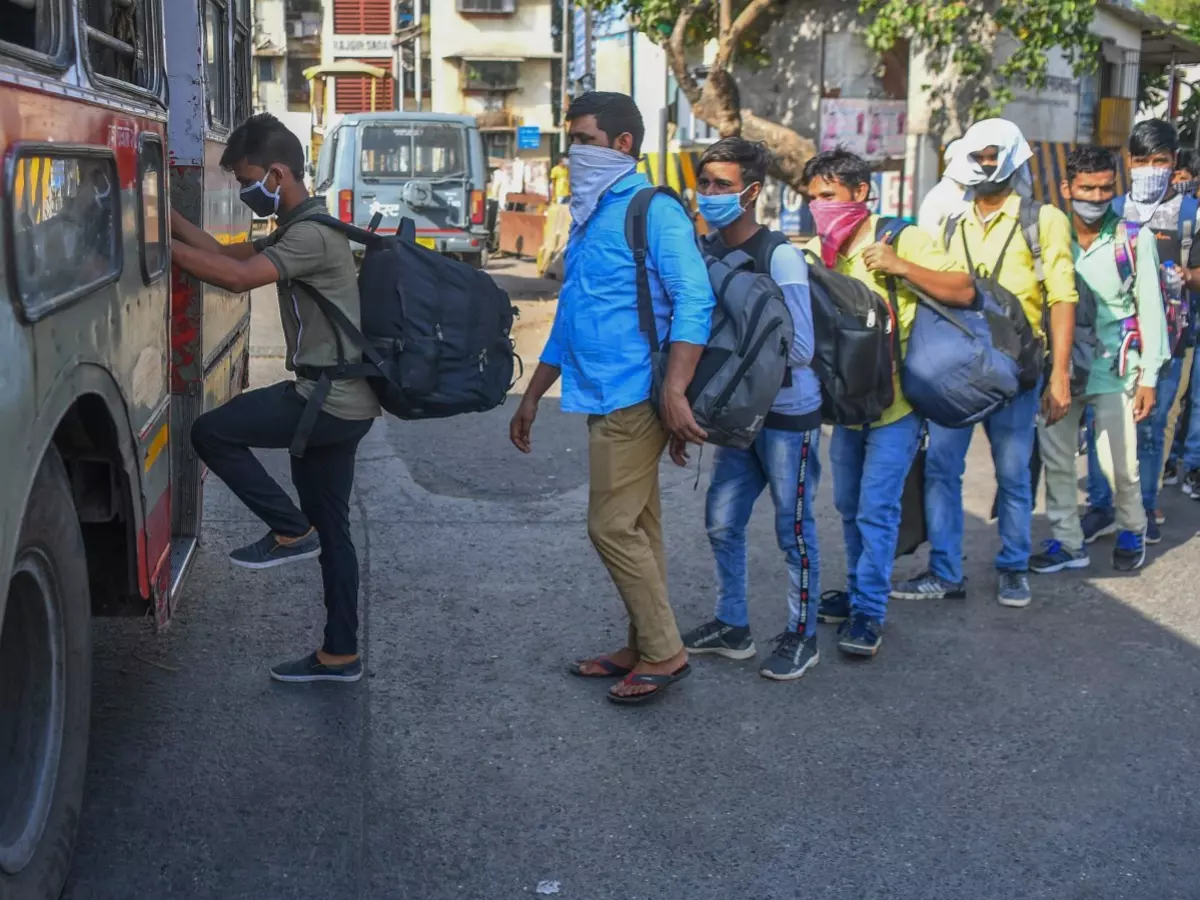After COVID-19, Next Challenge For States Is Creating Jobs For Returning Migrant Workers, NRIs
The nationwide lockdown which came into effect on the midnight of March 24 is being relaxed gradually, despite the number of new COVID-19 cases increasing at a rapid pace. The lockdown is being lifted partly to give some much-needed support to the economy which had been on a standstill for nearly one and a half months.

The nationwide lockdown which came into effect on the midnight of March 24 is being relaxed gradually, despite the number of new COVID-19 cases increasing at a rapid pace. The lockdown is being lifted partly to give some much-needed support to the economy which had been on a standstill for nearly one and a half months.
 BCCL
BCCL
The lockdown also triggered one of the largest mass reverse migration in history as millions of migrant workers from across the country left their workplaces for their homes, due to job losses.
With uncertainty over the resumption of factories and other workplaces, the millions who have left for their village in the hinterlands are not likely to come back anytime soon.
 AFP
AFP
This is posing a huge challenge fro states which had a huge migrant population - to create jobs for them. Uttar Pradesh, India's most populated state is among those will face this crisis.
According to a Times Of India report, more than four lakh persons have arrived in UP through bus, train or other means in the past five days. And the state is likely to have an influx of humanity in the coming days as more trains start running.
 AFP
AFP
With such a large number of mostly migrant workers returning, Uttar Pradesh is eyeing to create lakhs of jobs for the returnees.
Chief Minister Yogi Adityanath on Sunday said if 90 lakh micro, small and medium scale enterprises (MSMEs) in UP created one job each, the sector would provide 90 lakh employment opportunities. He also said that the government will make it easier for industries to function and get loans.
¡°A company willing to set up an industrial unit in UP can be given no-objection certificate in the last 100 days of the 1,000-day period of setting up of an industrial unit. This will allow industrial units to get loans from bankers on relatively easier terms,¡± he said.
On Monday, the UP CM while addressing a video conference with officials on MGNREGA said, "We should aim to provide jobs to 50 lakh people every day by the end of May. We can only do this if the officials perform their duty honestly. We need to provide jobs to those who have returned home due to lockdown."
We should aim to provide jobs to 50 lakh people every day by the end of May. We can only do this if the officials perform their duty honestly. We need to provide jobs to those who have returned home due to lockdown: UP CM during video conference with officials on MGNREGA pic.twitter.com/tF6q8nO0Db
¡ª ANI UP (@ANINewsUP) May 12, 2020
Other states like Bihar which also have a sizable migrant worker population is also gearing up to face the impact of them returning. Till Sunday, over 1.20 lakh migrant workers had returned to the state from different parts of the country.
 BCCL
BCCL
With this in mind, the state government has undertaken the mammoth task of creating work opportunities for migrant workers in different sectors like water resources, road construction, building construction, rural development, rural (road) works and minor irrigation.
Another state that is going to face a big challenge of job creation is Kerala. Unlike most states, the majority of those returning to Kerala are NRIs, especially from the middle east. It is a double blow for Kerala as the state is one of the highest recipients of foreign remittance in India.
 BCCL
BCCL
Around 10 percent of Kerala's population is working abroad and sends home close to Rs 85,000 crore annually.
With a crisis looming in the middle east there is going to be a substantial dip in the foreign remittance. This is in addition to the fact that among the nearly 4 lakh people who have registered on the state government's website to return, over 65,000 have stated that they have lost their jobs due to this pandemic.
